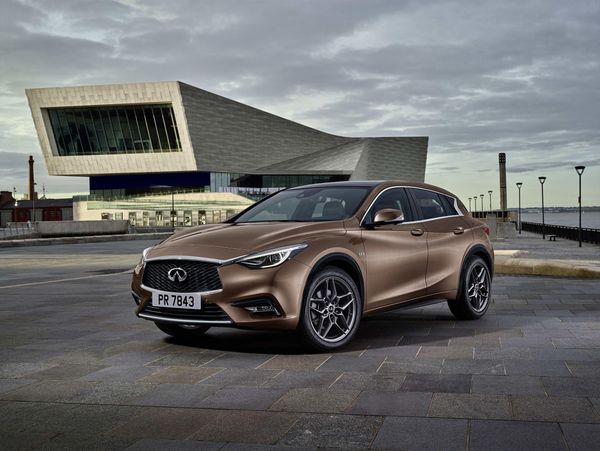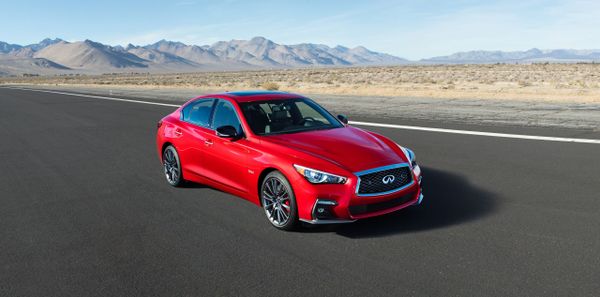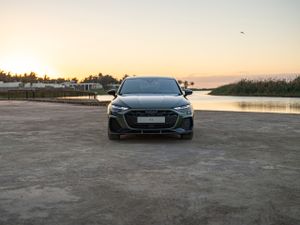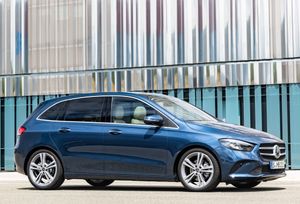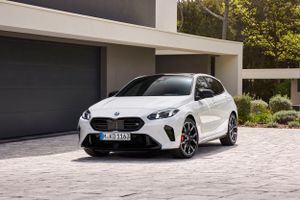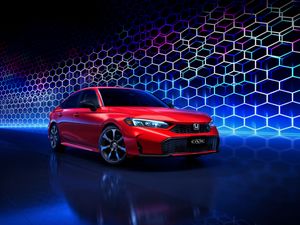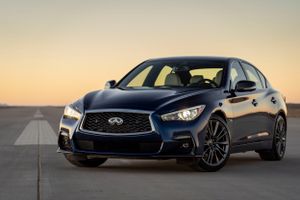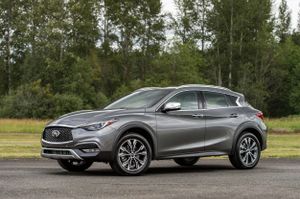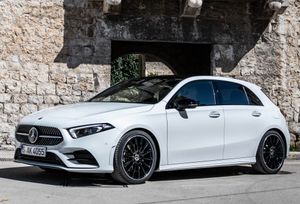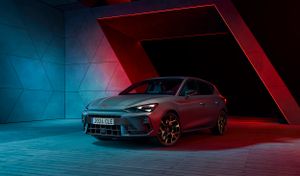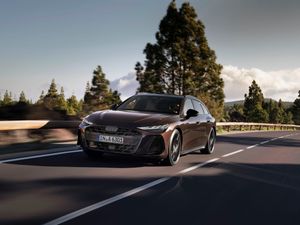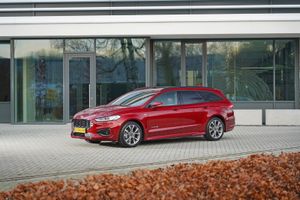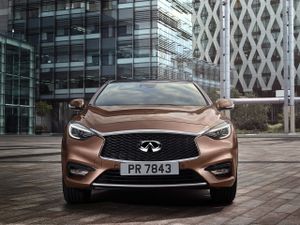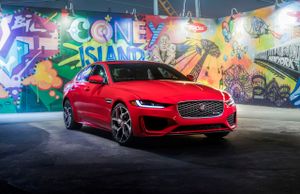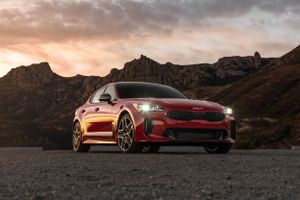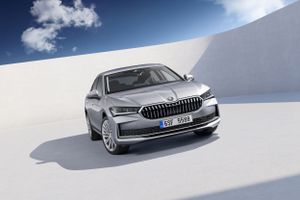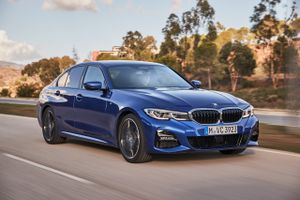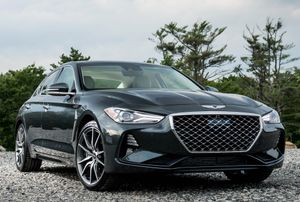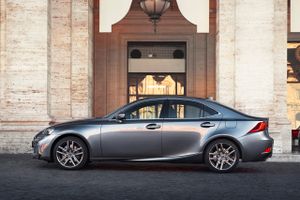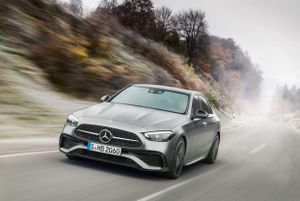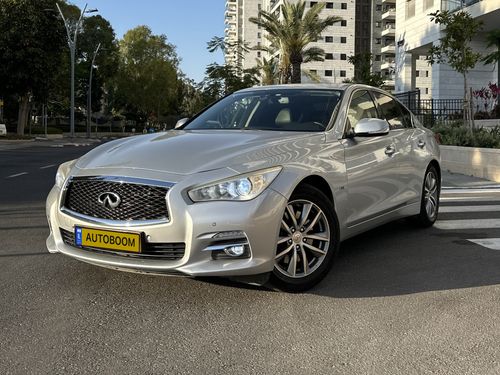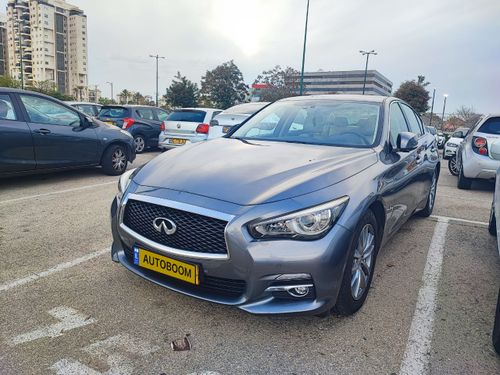Comparison of Infiniti Q30 and Infiniti Q50
Comparison of Infiniti Q30 and Infiniti Q50
Characteristics
Infiniti Q30 and Infiniti Q50
Transmission
Robotic
Automatic
Number of gears
7
7
Type of drive
FWD
RWD
Top speed
235 km/h
250 km/h
Acceleration to 100
7.3 sec
5.1 sec
Fuel tank capacity
50 l
80 l
Curb weight
1 579 kg
1 799 kg
Max weight
1 940 kg
Length
4 425 mm
4 810 mm
Width
1 805 mm
1 820 mm
Height
1 495 mm
1 445 mm
Wheelbase
2 700 mm
2 850 mm
Front track width
1 572 mm
1 545 mm
Rear track width
1 573 mm
1 565 mm
Trunk volume min
430 l
500 l
Wheel size
235/45 R19
245/40 R19
Fuel consumption city
9.2 l
13.3 l
Fuel consumption highway
5.9 l
6.7 l
Average consumption
7.1 l
9.1 l
ECO class
Euro 6
Euro 6
CO2 emissions
156 g/km
206 g/km
Engine type
Gasoline
Gasoline
Engine location
Front, transverse
Front, longitudinal
Engine power system
Direct injection (direct)
Direct injection (direct)
Engine capacity
1991 cm³
2997 cm³
Type of boost
Turbo
Turbo
Cylinder arrangement
Inline
V-shaped
Number of cylinders
4
6
Valves per cylinder
4
4
Compression ratio
9.8
10.3
Bore and stroke
83 × 92 mm
86 × 86 mm
Maximum power
211 (155 ) 5500
405 (298 ) 6400
Maximum torque N⋅m
357 1200 – 4000
475 1600 – 5200
Front suspension
Independent, spring
Independent, spring
Rear suspension
Independent, spring
Independent, spring
Front brakes
Ventilated disc
Ventilated disc
Rear brakes
Disс ventilated
Disс ventilated
Clearance
211
126
Trim version
Infiniti Q30 and Infiniti Q50
Driver's airbag
Passenger airbag
Side front airbags
Window airbags (curtains)
Driver's knee airbag
Tire pressure sensors
Locking the rear door locks
Keyless central locking
Motion sensor
Alarm
Immobilizer
Rear-view camera
360°
Isofix for the back row
Cruise control
Adaptive Cruise Control
Cruise control
Anti-lock braking system (ABS)
Electronic stability program (ESP)
Hill start assist (HAS)
Emergency brake assist (BAS, EBD, EBA)
Automatic slip regulation (ASR)
Vehicle stability management system (VSM)
Collision avoidance system
Lane departure warning system
Drive mode selection system
Traffic sign assist
Blind spot monitoring system
Smart Brake Support (Rear Crossing) (SBS-RC) System
AUX
USB
Bluetooth
12V
Voice control
Sound
Bose Hi-Fi audio system
Bose Hi-Fi audio system
Speakers
6 speakers
16 speakers
Folding rear seat
Pedal pads
Sports front seats
Leather steering wheel
Panoramic roof
Front center armrest
Power window
Third rear headrest
Kicking plates
Leather gear shift
Sunroof
Seat adjustment
Front seats adjustment
Front seat adjustment
Front seats with memory function
Seat trim
Combined seat trim
Fabric seats
Front seats
Side mirrors
Steering wheel height adjustment
Steering wheel reach adjustment
Power adjustment
With memory function
Power steering
Active power steering
Active power steering
Front parking sensors
Rear parking sensors
Air conditioner
Dual-zone climate control
Single-zone climate control
On-board computer
Start-stop system
Power folding mirrors
Power mirrors
Multifunction steering wheel
Folding mirrors
Electronic parking brake
Sports steering wheel
Keyless entry system
Engine Start Button
Self-darkening central mirror
Sports suspension
Metallic
External styling
Headlights
LED headlights
LED headlights
Headlight washer system
Light sensor
Rotary lights
Fog lamp
Rain sensor
Diameter
R18
R19
R19
R19
Material
Alloy
Photos
Infiniti Q30
Infiniti Q50
Comparison of Infiniti Q30 with other cars
Comparison of Infiniti Q50 with other cars
Compare similar cars Infiniti Q30 and Infiniti Q50
Infiniti Q30 and Infiniti Q50 are two popular cars, each with its own unique advantages and features. The choice between Infiniti Q30 and Infiniti Q50 depends on the driver's needs and preferences.Infiniti Q30 and Infiniti Q50 are two popular cars, each with its own unique advantages and features. The choice between Infiniti Q30 and Infiniti Q50 depends on the driver's needs and preferences.
